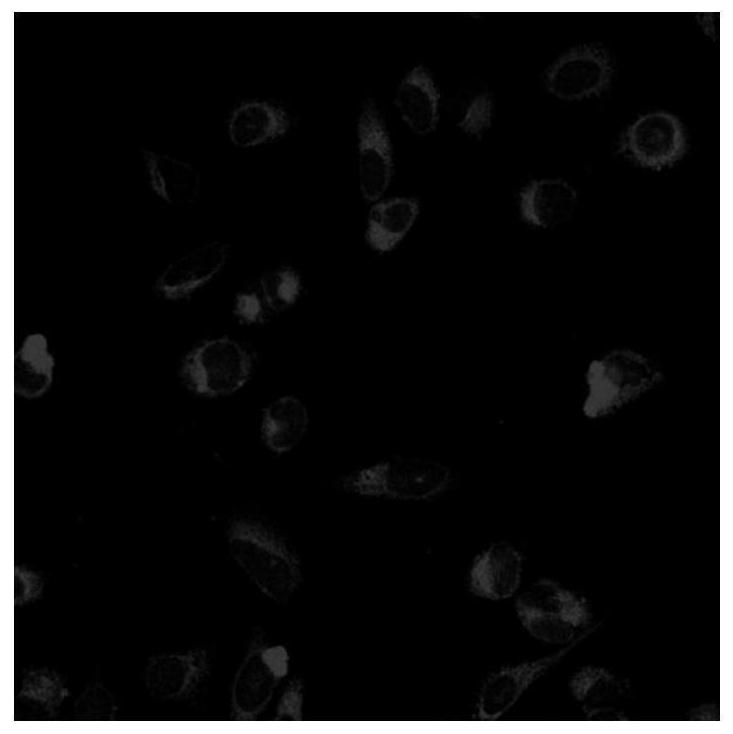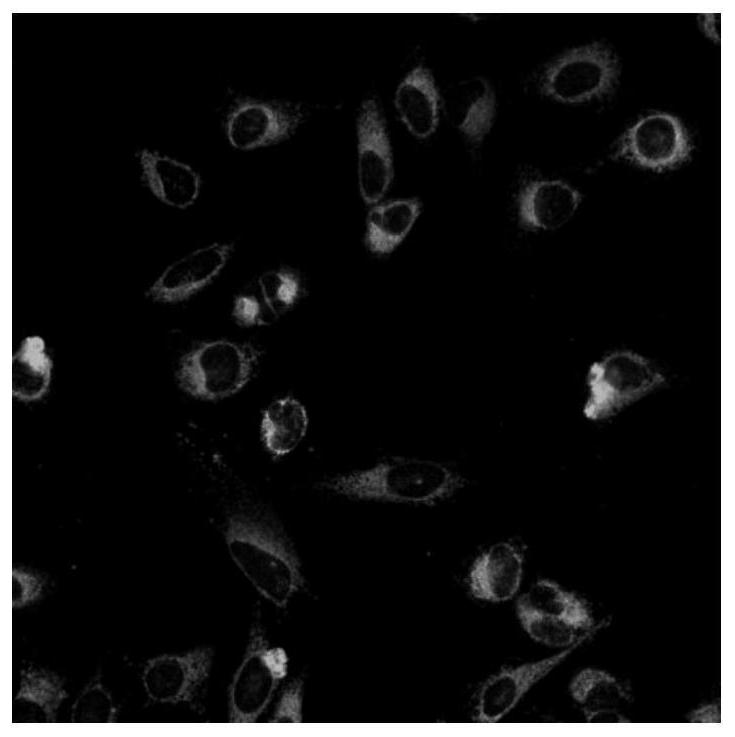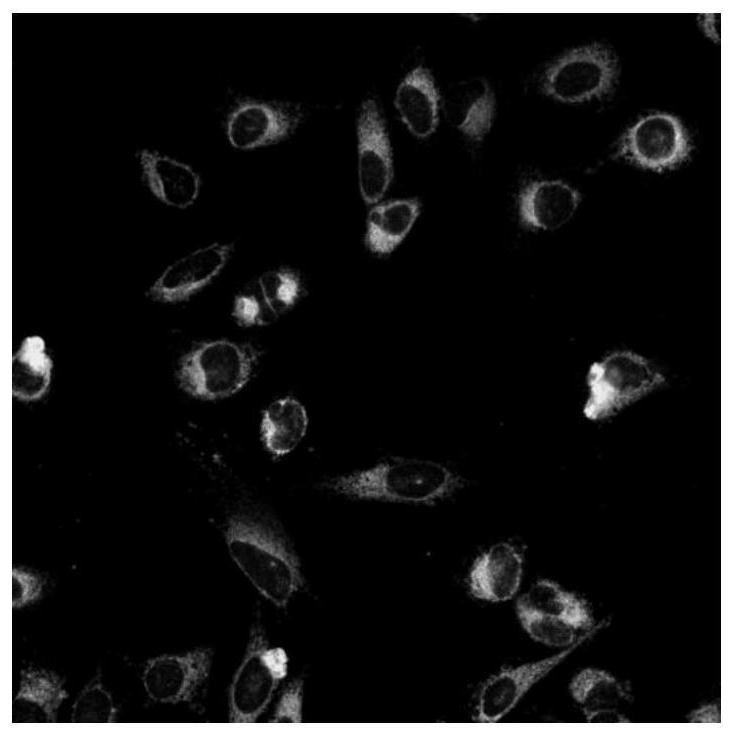Water-soluble red fluorescence mitochondria targeting probe and application thereof
A red fluorescence, mitochondrial technology, used in fluorescence/phosphorescence, luminescent materials, material analysis by optical means, etc., can solve the problem of the clarity of the imaging effect, the simplicity of the operation steps needs to be improved, and achieve high signal-to-noise ratio, good biological The effect of compatibility and good signal-to-noise ratio
- Summary
- Abstract
- Description
- Claims
- Application Information
AI Technical Summary
Problems solved by technology
Method used
Image
Examples
Embodiment 1
[0061] a structure such as The fluorescent probes shown are abbreviated as TPA-OH. Hela cells were co-stained by TPA-OH and Mito-tracker Green. The concentration of TPA-OH is 2 μM, and the concentration of mitochondrial green fluorescent probe is 100 nM. Fluorescence imaging by confocal microscopy. Finally, a multi-channel fluorescence image is obtained.
[0062] Both the red channel of TPA-OH and the mitochondrial green fluorescent probe (Mito-tracker Green) can see obvious cell outlines, and the images of the two channels are superimposed, as shown in figure 1 The green part and figure 2 The red part in the red channel image of confocal microscope fluorescence imaging overlaps and turns yellow, as shown in image 3 As shown, it is proved that TPA-OH and the mitochondrial green fluorescent probe (Mito-tracker Green) target the same organelle, namely the mitochondria.
Embodiment 2
[0064] a structure such as No. 2 fluorescent probes are indicated. Hela cells were co-stained by fluorescent probe No. 2 and mitochondrial green fluorescent probe (Mito-tracker Green). The concentration of No. 2 fluorescent probe is 2 μM, and the concentration of mitochondrial green fluorescent probe is 100 nM. Fluorescence imaging by confocal microscopy. Finally, a multi-channel fluorescence image is obtained.
[0065] Both the red channel of fluorescent probe No. 2 and the mitochondrial green fluorescent probe (Mito-tracker Green) can see obvious cell outlines, and the images of the two channels are superimposed, as shown in Figure 4 The green part and Figure 5 The red part in the red channel image of confocal microscope fluorescence imaging overlaps and turns yellow, as shown in Figure 6 As shown, it is proved that TPA-OH and the mitochondrial green fluorescent probe (Mito-tracker Green) target the same organelle, namely the mitochondria.
Embodiment 3
[0067] a structure such as No. 3 fluorescent probes are indicated. Hela cells were co-stained by fluorescent probe No. 3 and mitochondrial green fluorescent probe (Mito-tracker Green). The concentration of the No. 3 fluorescent probe is 2 μM, and the concentration of the mitochondrial green fluorescent probe is 100 nM. Fluorescence imaging by confocal microscopy. Finally, a multi-channel fluorescence image is obtained.
[0068] Both the red channel of fluorescent probe No. 3 and the mitochondrial green fluorescent probe (Mito-tracker Green) can see obvious cell outlines, and the images of the two channels are superimposed, as shown in Figure 7 The green part and Figure 8 The red part in the red channel image of confocal microscope fluorescence imaging overlaps and turns yellow, as shown in Figure 9 As shown, it is proved that TPA-OH and the mitochondrial green fluorescent probe (Mito-tracker Green) target the same organelle, namely the mitochondria.
[0069] Result a...
PUM
 Login to View More
Login to View More Abstract
Description
Claims
Application Information
 Login to View More
Login to View More - R&D
- Intellectual Property
- Life Sciences
- Materials
- Tech Scout
- Unparalleled Data Quality
- Higher Quality Content
- 60% Fewer Hallucinations
Browse by: Latest US Patents, China's latest patents, Technical Efficacy Thesaurus, Application Domain, Technology Topic, Popular Technical Reports.
© 2025 PatSnap. All rights reserved.Legal|Privacy policy|Modern Slavery Act Transparency Statement|Sitemap|About US| Contact US: help@patsnap.com



